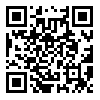目的 比较不同中医证型的原发性干燥综合征(pSS)合并动脉粥样硬化(AS)患者的实验室指标水平。方法 回顾性分析122例pSS合并AS患者的临床资料,根据中医证型将患者分为阴虚津亏证、气阴两虚证、阴虚热毒证、阴虚血瘀证。比较不同证型患者红细胞沉降率(ESR),白细胞计数、单核细胞计数、中性粒细胞计数、C 反应蛋白(CRP)水平,以及血清甘油三酯、总胆固醇、HDL、LDL、白细胞介素6(IL⁃6)、白细胞介素2受体(IL⁃2R)、肿瘤坏死因子α(TNF⁃α)水平。结果 122例pSS合并AS患者中,阴虚津亏证、气阴两虚证、阴虚热毒证、阴虚血瘀证分别有23例、37例、19例、43例。各中医证型患者ESR、单核细胞计数、中性粒细胞计数、白细胞计数,以及血清甘油三酯、总胆固醇、HDL、LDL、IL⁃6、TNF⁃α水平比较,差异无统计学意义(P>0.05),阴虚热毒证患者的血清IL⁃2R、CRP水平高于其他证型(P<0.05)。结论 pSS患者合并AS以阴虚血瘀证较为常见,阴虚热毒证患者的血清IL⁃2R和CRP水平高于其他证型。
广西医学 页码:388-392
作者机构:赵浩,博士,硕士生导师,主任医师,研究方向为风湿病,心血管疾病。
基金信息:国家自然科学基金(82374342)
- 中文简介
- 英文简介
- 参考文献
Objective To compare the levels of laboratory indices in patients with primary Sjögren syndrome (pSS) in different Traditional Chinese Medicine syndromes and concomitant atherosclerosis (AS). Methods A retrospective analysis was performed on 122 patients with pSS and concomitant AS, and they were assigned to syndromes of yin deficiency with fluid deficit, deficiency of both qi and yin, yin deficiency with heat toxicity, and yin deficiency and blood stasis according to the Traditional Chinese Medicine syndromes. Erythrocyte sedimentation rate (ESR), white blood cell counts, monocyte counts, neutrophil counts, C⁃reactive protein (CRP) level, and levels of serum triglyceride, total cholesterol, HDL, LDL, interleukin 6 (IL⁃6), interleukin 2 receptor (IL⁃2R), tumor necrosis factor α (TNF⁃α) were compared between patients with different syndromes. Results Among 122 patients with pSS and concomitant AS, there were 23, 37, 19, and 43 cases of syndromes of yin deficiency with fluid deficit, deficiency of both qi and yin, yin deficiency with heat toxicity, and yin deficiency and blood stasis, respectively. There was no statistically significant difference in ESR, monocyte counts, neutrophil counts, white blood cell counts, and in levels of serum triglyceride, total cholesterol, HDL, LDL, IL⁃6, TNF⁃α between patients with different Traditional Chinese Medicine syndromes (P>0.05). Patients with yin deficiency with heat toxicity syndrome obtained higher levels of serum IL⁃2R and CRP as compared with other syndromes (P<0.05). Conclusion Patients with pSS are prone to concomitant AS, and yin deficiency and blood stasis syndrome is more common. Patients with yin deficiency with heat toxicity syndrome obtain higher serum IL⁃2R and CRP levels as compared with other syndromes.
-
无




 注册
注册 忘记密码
忘记密码 忘记用户名
忘记用户名 专家账号密码找回
专家账号密码找回 下载
下载 收藏
收藏
